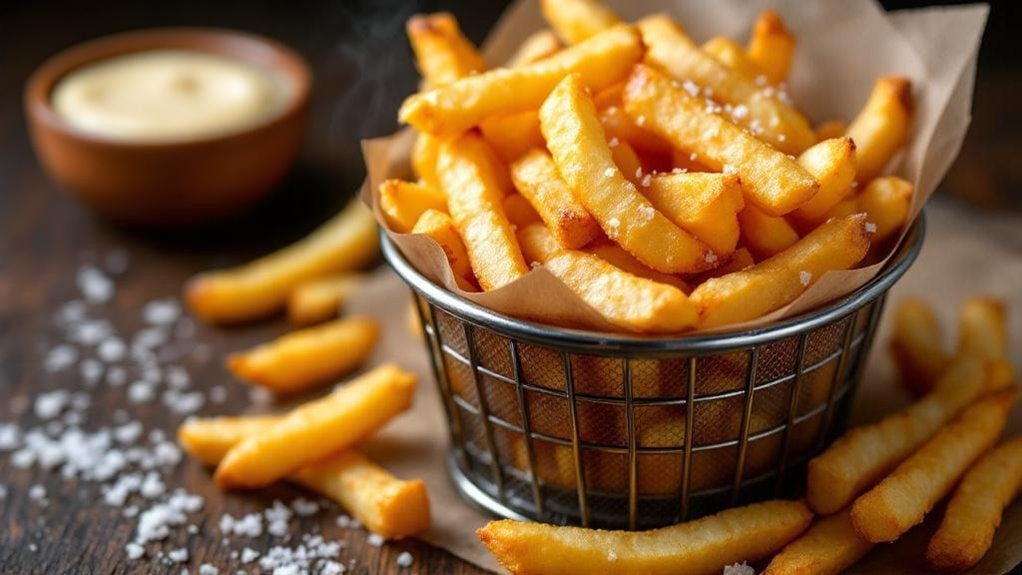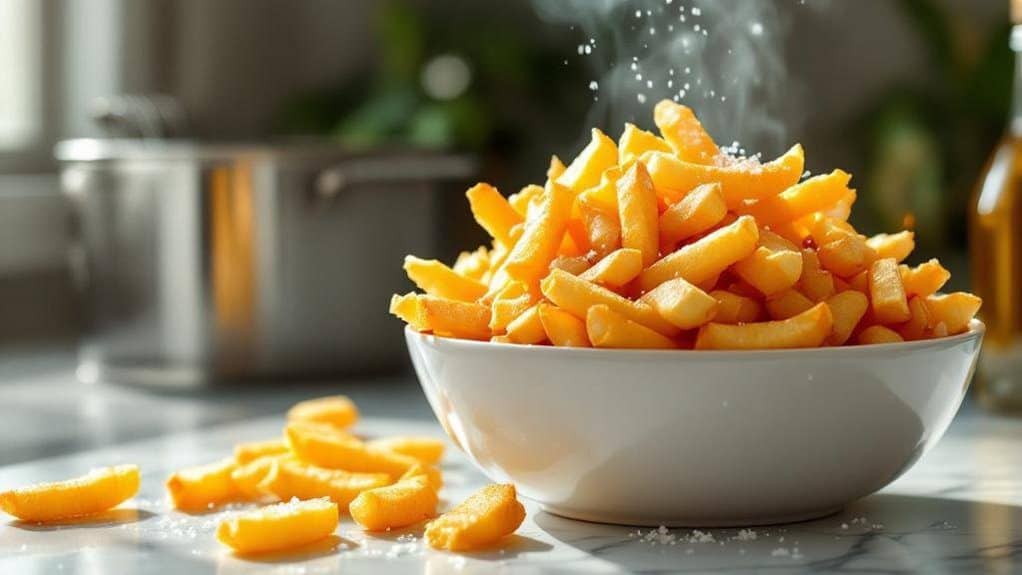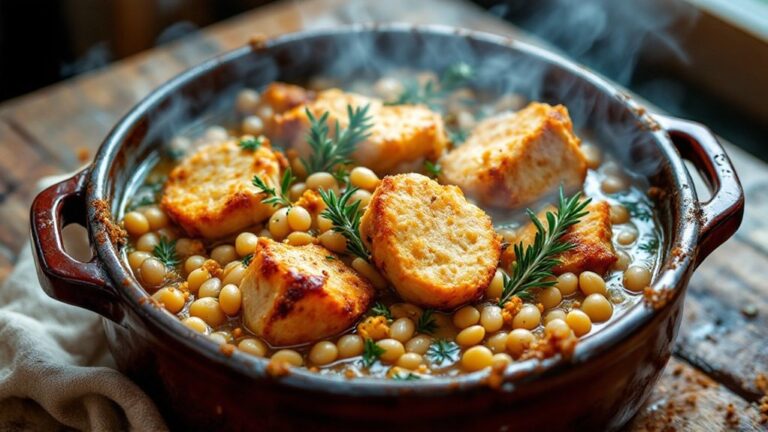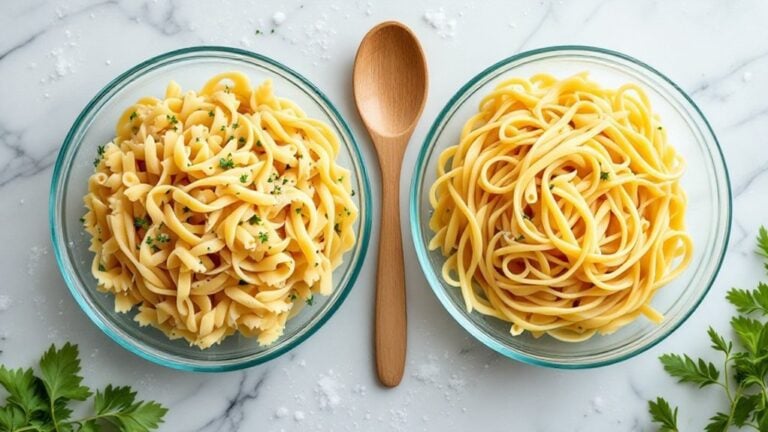Why Restaurant-Style Fries Are Better Than Yours—And How to Cook Them Properly
Restaurant fries crush homemade ones because professionals double-fry them. They cut potatoes uniformly, soak them to remove starch, then fry at 325°F initially. After resting, they blast them again at 350-410°F. That’s the secret. Most home cooks fry once and wonder why their fries suck. Some places even parboil and freeze their spuds before frying. Small batches, proper oil depth, immediate seasoning—it’s a whole process that transforms boring potatoes into golden perfection.

Unless someone’s been living under a rock, they know restaurant fries hit different than the sad, soggy sticks most people pull from their home ovens. The secret isn’t magic. It’s technique, and most home cooks are doing it wrong.
To start, restaurants don’t just hack away at potatoes with a knife. They use mandolines or commercial cutters to get uniform pieces—usually shoestring cuts at a quarter-inch or thicker bistro-style at half an inch. Starchy potatoes work best. They get fluffy inside while the outside crisps up. The pros reach for Russet potatoes in the US or Maris Piper in the UK—floury varieties that guarantee that perfect texture.
Uniform cuts matter. Restaurants use proper tools, not knives. Starchy potatoes crisp outside, stay fluffy inside.
Here’s where it gets interesting. Professional kitchens soak their cut potatoes in cold water for 15 to 30 minutes. This pulls out excess starch, which is what makes fries stick together in one greasy clump. After soaking, they dry them completely. Not halfway. Completely. Water and hot oil don’t mix, and lazy drying leads to splatter and soggy fries.
The real game-changer is double frying. Restaurants fry once at around 325°F for 4 to 10 minutes until the fries are blonde and soft. This first fry should actually be at 125 degrees Celsius, which cooks the inside perfectly. Then they pull them out, let them rest, and blast them again at 350 to 410°F for just a few minutes. That second fry creates the golden, crispy exterior everyone craves.
Some places take it further with parboiling—basically blanching fries in boiling water before the initial fry. Fast food joints often freeze their parboiled fries too. Sounds excessive, but it removes moisture and creates that perfect soft-inside, crispy-outside texture.
Oil matters. Peanut oil handles high heat without burning. Temperature control is essential—restaurants use thermometers and maintain at least two inches of oil depth. They also fry in small batches because cramming too many fries in drops the oil temperature, resulting in greasy disasters.
Timing is everything with seasoning. Salt goes on immediately after that second fry while the oil’s still hot enough to make it stick. Some places get fancy with garlic powder or parmesan, but salt’s the classic.
The difference between restaurant fries and home attempts isn’t talent. It’s method. They follow the steps. Most people don’t.






